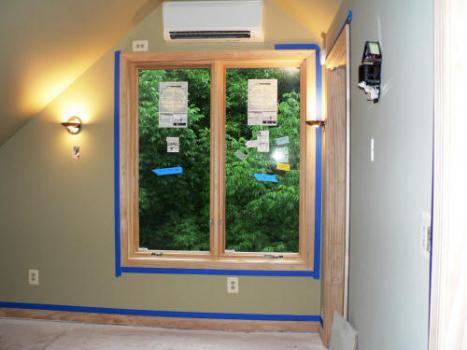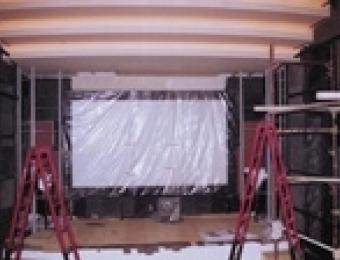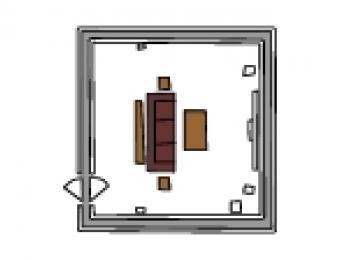
Where to install soundproofing
The first step to deciding how you’re going to soundproof is to know what kind of noise you want to stop, where it’s going to come from, and what area you'd like to keep it out of. Once you know this, it’s simply a matter of using the best method to block that frequency and volume of sound.
Often, the most sound will come through windows (especially single glazed, untreated windows), although it's easy to overlook the possibility that a significant amount of sound might also come through walls or the ceiling. Different frequencies will be transmitted more effectively through different materials. If you're unsure where the sound is coming from, an assessment by a professional soundproofer will help you to find out.
Another form of transmission is known as 'flanking noise'. This involves sound being transmitted through gaps in the construction, such as poor seals between structural elements and around service penetrations, heating and ventilation dictuing, rigid plumbing connections and penetrations, back-to-back cabinets and power switches and outlets.
A third type of sound transmission called structural noise. This is caused by noise generated by tapping or banging on one side of the construction and carried through the structural elements to the other side of the construction. This is more of a concern in floors where people are walking above. Insulation will help this but additional measures will be required for optimum performance.
Rw/Rw+Ctr values and how they apply
When you're looking at soundproofing materials or measures, you may come across a rating for soundproofing that's listed as two figures separated by a slash mark - this is known as an Rw/Rw+Ctr rating. The first number is known as the Rw value (it's the 'Weighted Sound Reduction Index') - this value will always be higher, as it indicates the material's pure soundproofing performance. The second value takes into account various contributing factors that will mitigate the effectiveness of sound insulation (Ctr is what's known as a 'spectrum adaptation term'). This rating gives you an indication of how well the soundproofing will perform in real terms when it's installed. You’re looking for high values here for more effective performance.
How to soundproof different parts of your home
Windows
Ideally for windows, you will want double or triple glazing to block sound effectively. The layers of air (or gases like Argon, as is usually the case) provide a break for any sound passing through. It's much more difficult to pass a vibration through a dense material, then air or a gas, then another dense material than it is to simply pass a vibration through a single-paned window. Most of the sound's energy is lost in the transfer between the different mediums when using double glazing.
Walls
Depending on what phase of construction you’re in, improving the soundproofing in your walls may be relatively easy or very difficult. Being able to insert additional soundproofing elements, and to isolate the various framing elements from each other to stop sound being transferred between them will make a huge difference to a wall’s acoustic performance. Retrofitting soundproofing can be done to a certain extent, but there may be unresolvable underlying problems with the frame that will allow structural noise to continue.
Ceilings
Ceiling spaces are generally easier to insulate for sound, because they're easily accessible regardless of what state your home is in. Even ceiling spaces present a few issues though - including things like ductwork and ventilation, which may still allow a certain amount of flanking noise through.
Doors
Doors can be tricky to soundproof. Solid core doors perform only slightly better than hollow core doors, making the choice a difficult one until you realise that most of the sound transmission through a door is from around the unsealed edges. If you can seal these off, your doors will likely block sound as effectively as your walls will. For extra soundproofing (normally in home theatres), a double-door setup with a void in between is often used.
Floor coverings and furnishings
The way the sound in your home will carry can depend a great deal on what’s inside it for the sound to bounce off. If you have a lot of soft furnishings and fixtures like carpet and curtains, you will notice that sound decays and diffuses very rapidly, contributing to a ‘dead’ sound. Solid and dense floor coverings though, like tiles and concrete, are notorious for reflecting sound back as an echo, making it bounce around the room.





